
|

|

|
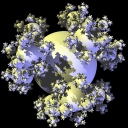
|
|
(click on each image for a larger view).
|
Four images of a sphereflake at four different stages of "bloom".
| spheres | w/o BVH | with BVH | BVH create |
| 10 | 0.9 | 1.9 | 0.0 |
| 91 | 5.6 | 6.9 | 0.0 |
| 820 | 51.5 | 18.3 | 0.0 |
| 7381 | 15:12.8 | 34.4 | 0.1 |
bar chart
|
|
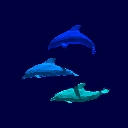
|

|
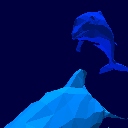
|
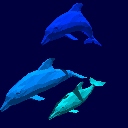
|
|
(click on each image for a larger view).
|
A scene with dolphins from four different views (1692 triangles, 2 lights).
| triangles | w/o BVH | with BVH | BVH create |
| 845 | 52.4 | 3.7 | 0.0 |
| 830 | 1:12.8 | 8.5 | 0.0 |
| 946 | 1:16.4 | 11.1 | 0.0 |
| 891 | 1:04.9 | 6.0 | 0.0 |
bar chart
|
|

|

|

|

|
|
(click on each image for a larger view).
|
A few different scenes.
| scene | triangles | lights | with BVH |
| al | 4105 | 2 | 8.7 |
| soccerball | 1755 | 2 | 15.2 |
| rose+vase | 1562 | 4 | 5.4 |
| teapot | 3136 | 2 | 11.9 |
|
|
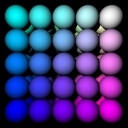
|
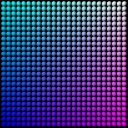
|

|
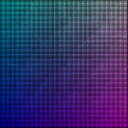
|
|
(click on each image for a larger view).
|
My color cube scene.
| spheres | with BVH | BVH create | total time |
5x5x5
(125) | 5.9 | 0.0 | 5.9 |
25x25x25
(15,625) | 45.6 | 0.4 | 50.0 |
50x50x50
(125,000) | 1:31.6 | 16.9 | 1:48.5 |
100x100x100
(1,000,000) | 5:07.1 | 15:03.3 | 20:10.4 |
The 100x100x100 scene took by far the longest to create the bounding volume
hierarchy (15 minutes!). Perhaps this generates the degenerate case (sorted
backward) for qsort, because of the regularity of the spheres? Or, perhaps
each bounding volume can contain the maximum amount of spheres, again, because
of the regularity? It is interesting to compare this result with that below of
the million random spheres (which is more than 20 times faster).
|
|
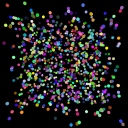
|
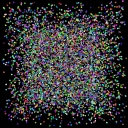
|
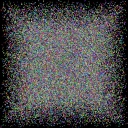
|

|
|
(click on each image for a larger view).
|
Four different random sphere scenes.
| spheres | with BVH | BVH create | total time |
| 1,000 | 3.8 | 0.0 | 3.8 |
| 10,000 | 11.5 | 0.1 | 11.6 |
| 100,000 | 23.0 | 2.1 | 25.1 |
| 1,000,000 | 1:09.2 | 38.7 | 1:47.9 |
Something interesting to note about these images is that you can see some
patterns emerging (especially in the upper right corner of the images with many
spheres). I believe that this shows the distribution properties
of the random function used to generate the spheres. In these images, the rand()
function from the C library that comes with Microsoft Visual C++ was used. It
looks like it has a pretty poor distribution.
|



















